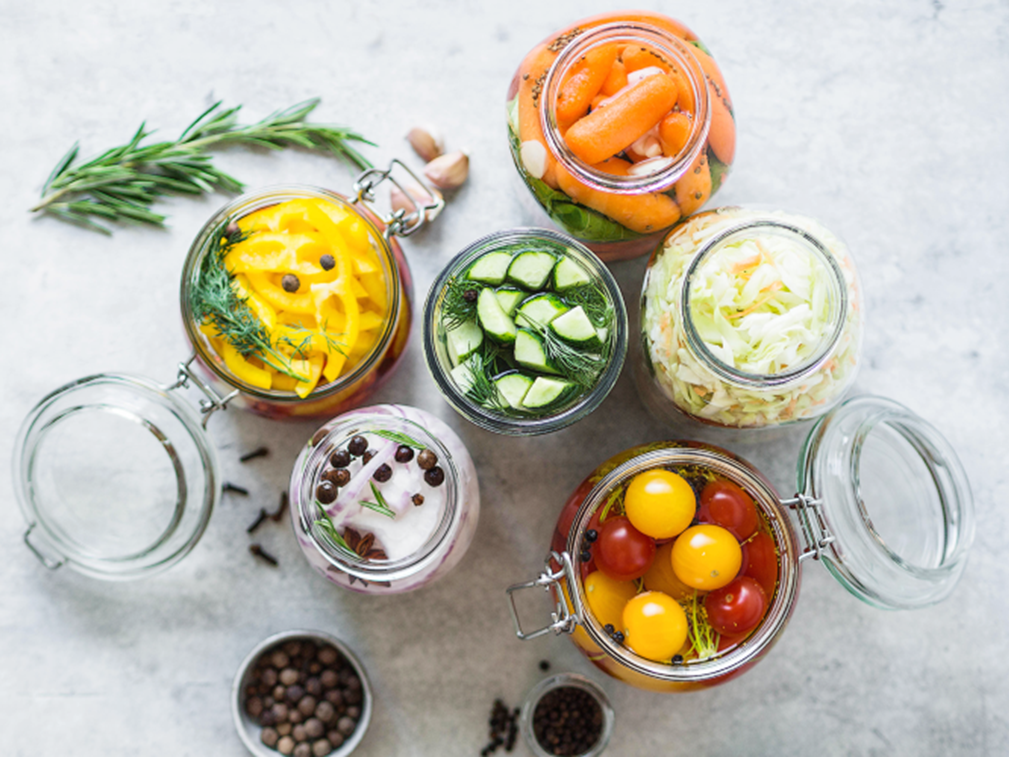Quick pickling is the new big thing in the kitchen
When I was a child, family get-togethers involved buffet lunches. One of the highlights were the big jars of ‘quick pickles’ that my father, aunts, and uncles had been taught to make by my grandmother. Quick pickles are vegetables pickled in a solution of vinegar, water, salt and sometimes sugar, then kept in the fridge. These are not deeply pickled onions, nor fermentation. Quick pickles taste light, fresh and crunchy. My Grandmother pickled fresh veg from her garden during the Second World War. Veg needs to be super-fresh and undamaged. It can be cut to any shape. I like to boil green veg such as green beans and asparagus for two or three minutes then plunge them into ice cold water to preserve their bright colour, but it’s optional. To make the basic brine use equal parts light vinegar and water. By light vinegar I mean white, apple cider, white wine, or rice vinegar. Don’t use pickling vinegars or balsamic. To the brine add whatever spices you like. Dill seed, chilli flakes and garlic are nice. Coriander, ginger, turmeric, and thyme work with carrots. Classic combinations include green beans with garlic and fresh dill, and cherry tomatoes with black peppercorns and garlic. We grew some squash this year and quick pickled some of the little ones with onion and garlic. Wide-mouth large jars are the best containers. Wash them and their lids, and rings in warm, soapy water and rinse thoroughly. Allow to dry completely. Wash and dry the vegetables then prep them. Peel any carrots, trim the end of beans etc. Cut vegetables into evenly sized pieces. Add any flavourings to the jars. You can choose different flavours for each vegetable jar. Pack the vegetables as tightly into the jars as you can without damaging them, leaving a couple of centimetres space at the top. To make the brine, place the vinegar, water, salt, and any sugar into a small saucepan. Heat on high to bring to the boil. Stir to dissolve the salt and sugar. Pour the hot brine over the vegetables, filling each jar to within 2cm of the top. You’ll get better at judging how much brine to make as you repeat the process. Gently tap the jars against the counter a few times to remove all the air bubbles. Top up with more brine if needed. Seal the jars tightly. Cool to room temperature and then refrigerate for at least 48 hours. The pickles improve with flavour as they age. They can be stored in the fridge for about 2 months.
Flavours for Quick Pickles
Fresh herbs: dill, thyme, oregano, and rosemary hold up well
Dried herbs: thyme, dill, rosemary, oregano, or marjoram
Garlic cloves: smashed for mild garlic flavour, or sliced for stronger garlic flavour
Fresh ginger: peeled and thinly sliced
Whole spices: mustard seed, coriander, peppercorns, red pepper flakes, chilli flakes
Ground spices: turmeric or smoked paprika are great for both colour and flavour
Vegetables for Pickling
Cucumbers, summer squash, ginger, red onion – thinly sliced
Carrots- Peel – cut into batons or rounds
Green beans, asparagus – blanch to preserve colour
Cherry tomatoes – pickle whole

